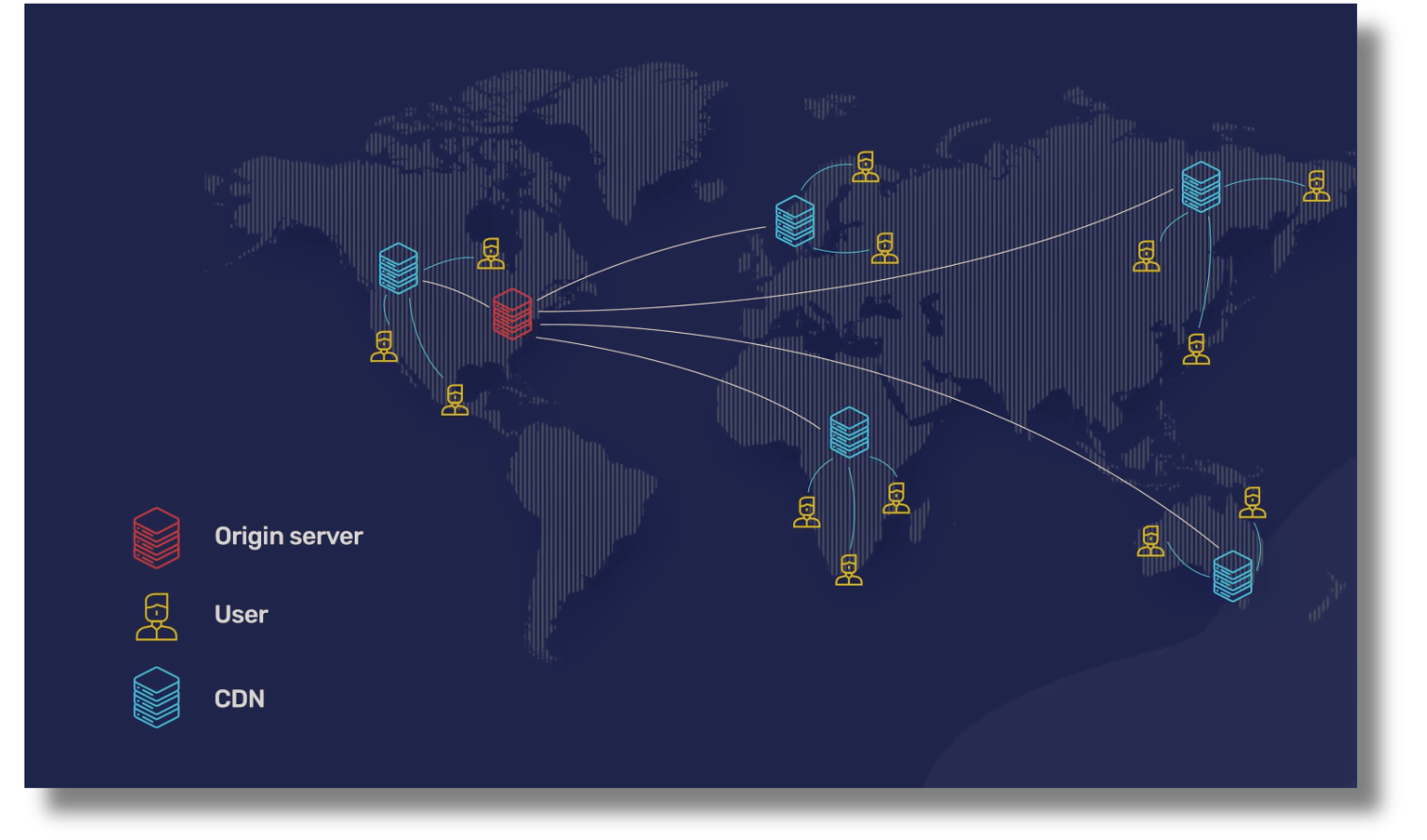- Domain
- Web Design
- Web Hosting
Content Delivery Networks - and the need for it
What is Content Delivery Networks – and the need for it
A Content Delivery Network (also known as ‘CDN’) is a distributed network of servers/hosts strategically placed across various geo-locations to deliver website content, including (but not limited to) images, videos, scripts, style sheets, and other assets, to users more efficiently/quickly. The primary purpose of a CDN is to increase the speed and improve the reliability and performance of content delivery by reducing latency and optimizing data transmission.
Here are some main features and functions of CDNs:
Data Caching:
CDNs cache static content, saving copies of it on servers located closer to visitors. This reduces the load on the origin server and speeds up content delivery.
Server Dispersion:
CDNs have multiple servers (also known as edge servers or nodes) dispersed in various locations around the world. This dispersion allows them to serve content from the server that is physically closest to the user, minimizing latency (or reducing the time to seek the content).
Balancing the Load:
CDNs use load-balancing algorithms to distribute incoming requests across multiple servers. This ensures that no single server is overloaded with too much traffic, optimizing overall performance.
How CDN enhance Security?
CDNs can enhance security by providing features such as DDoS (Distributed Denial of Service) protection, Web Application Firewalls (WAFs), and SSL/TLS encryption. They act as a barrier between the origin server and potential threats.
Scalability:
CDNs make it possible for websites to handle increased traffic and scale more effectively by distributing the load across multiple servers. This is particularly useful during traffic spikes or surges.
Optimization of Content:
CDNs may offer features like image optimization, minification of scripts and style sheets, and compression to reduce the size of files, which improves load times further.
Supports Streaming:
CDNs are commonly used for streaming multimedia content, such as videos and live broadcasts, by providing low-latency delivery and efficient protocols for streaming.
Analytics and Reporting:
Content Delivery Networks often provide analytics tools that allow website owners to observe and analyze Internet traffic patterns, visitor behavior, and other performance metrics.
By employing a CDN, websites and apps can enhance their performance, reduce latency, and provide a better user experience. Well-known CDN providers include Akamai, Cloudflare, Fastly, Amazon CloudFront, Microsoft Azure and others. Web Design labs offer CDN support packages, please contact our support team for the same.
Categories
Server/VPS/VDS (7)Client Portal (2)Web Hosting (13)Email (8)Billing (3)Website Design (1)Compliance (2)Domain Name Registry (1)General (19)Reseller Hosting (0)Most Recently Added Topics
What is DeepSeek?What is DNS_PROBE_FINISHED_NXDOMAIN Error and How to Fix ItE-Commerce Web Design in South Africa: A Complete GuideReseller Opportunities in South Africa: A Comprehensive GuideHow to Install WordPress Using Softaculous (DirectAdmin)How to Create an Addon Domain And Sub Domain In DirectAdminHow to Fix the ERR_CACHE_MISS ErrorHow to fix the HTTP 429 Too Many Requests Error in WordPress: A Step-by-Step GuideWhat Is a Load Balancer: A Comprehensive GuideHow to Enable SMTP Authentication using Outlook Express ?
Call now to get more detailed information about our products & services.
Call Timings: 9am to 5pm UTC +2:00 (Mon-Fri).
24/7 email & Live Chat Support+27 21 825 9700
Web Hosting
ASP.Net Hosting Email Hosting Free Web Hosting OpenCart Hosting Reseller Hosting Shared Web Hosting Windows Hosting Wordpress HostingServer & Internet Services
Virtual Private Servers ( VPS) Budget Dedicated Server Co-Location Internet Deals Top
Top

